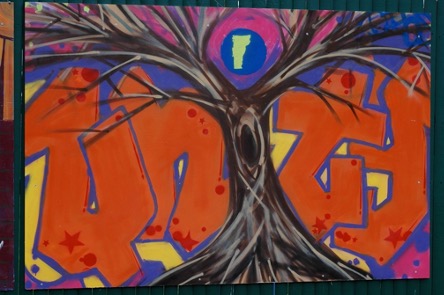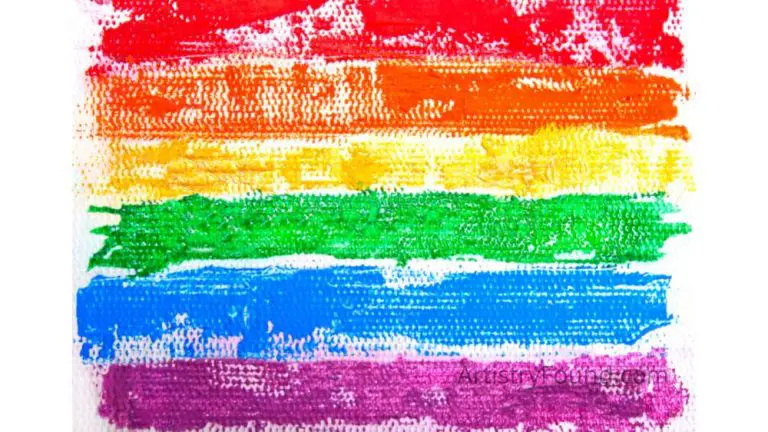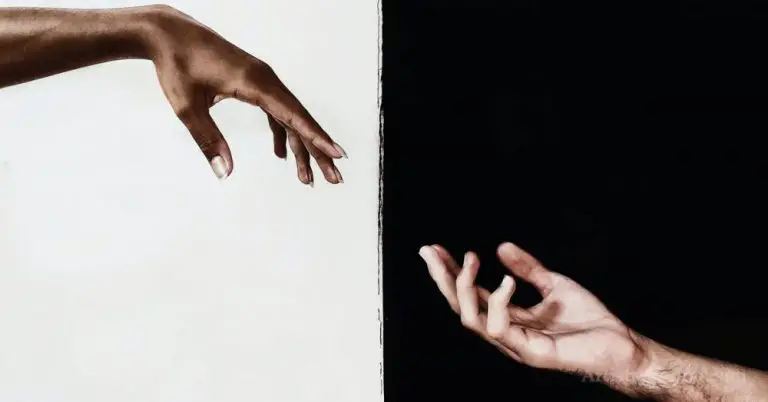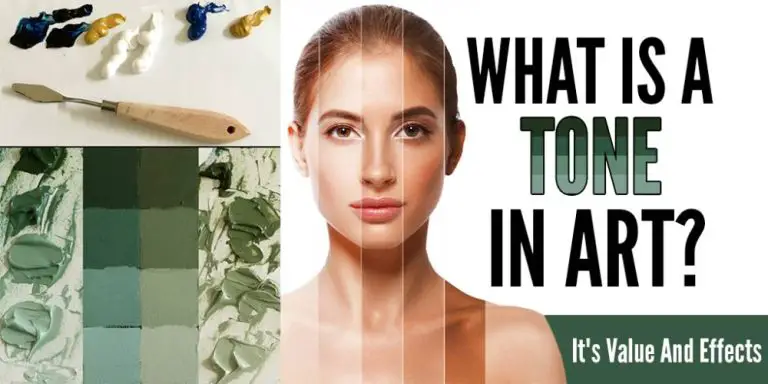What is Unity in Art? (Explained in Detail)
Unity in Art is a concept in which the components of art are used or placed in such a way that they convey a sense of completeness. This leads to the artwork’s composition being unified. Unity, in short, gives an artwork a sense of “oneness.”
The idea that the pieces in a collection are unified is known as harmony. The subject of the visual and performing arts is chosen by artists. Furthermore, they have control over how to arrange their material within the frame or on stage. When work is referred to as having unity, it implies that the arrangements were successful.
What is the Importance of Unity in Art?

(This article may contain affiliate links and I may earn a commission if you make a purchase)
Unity is an important aesthetic principle since it determines the composition’s so-called wholeness or, as some say, cohesiveness. It connects all the elements and other concepts and provides the artwork’s central theme or meaning; without it, the art will appear disjointed, meaningless, and out of balance.
- The effectiveness of your design depends on establishing and keeping uniformity across your printed product.
- If there is no uniformity, the artwork’s main message may be lost, or the intended audience might miss it.
- Unity contributes to the image’s overall cohesiveness, both in terms of appearance and message.
Unity in Art For Buyers
When purchasing art, it’s important to understand the concept of harmony in art.
Not only should you seek pieces with a narrative, but you should also think about how those items might interact with one another before placing them on the wall.
It wouldn’t make sense to put a piece of landscape photography next to a piece of pop art because they have different styles. A piece of landscape photography would be better suited next to a piece of realism art, while a piece of pop art would be better suited next to a piece of abstract art.
Artists put a lot of work into each piece, but they have little control over how it is displayed in your home. As a result, you are just as much an artist as the artists. Because you must work to assemble a collection of elements that complement one another to tell a bigger story.
It will be a learning experience. Before hanging them on the wall, combine and rearrange components on the floor to get the greatest viewing experience possible.
Finally, go with your own tastes. It’s all about personal preferences!
Three Kinds of Unity in Art

Compositional Unity
Compositional unity refers to the artist’s tactics for tying together the various aspects of art in a work in a unified manner, resulting in the finest visual experience possible.
To achieve compositional unity, the artist strategizes their experience in achieving unity between too much repetition and too much variance in using art elements and balancing their artwork.
Many novice artists are unable to integrate art elements in a unified manner, resulting in some aspects of the artwork attracting more attention or causing distraction. This is when we say there is a lack of compositional unity.
Compositional unity is immediately recognizable and memorable.
Conceptual Unity
The unified expression of ideas inside an art piece is referred to as conceptual unity. Although the expression of ideas may not appear to be well-organized, an artist can nonetheless clearly articulate them by choosing visuals that conjure up a single thought.
Generally, the concept may not appear to be well-organized or intelligible at first glance. However, the artist can use things, images, patterns, and other forms to transmit and crystalize his idea, which he has observed, overheard, read, or experienced.
Artists infuse their art with their own objectives, experiences, and feelings. These notions, both conscious and unconscious, can contribute to a work’s conceptual cohesiveness.
In a word, conceptual unity is singleness or the act of merging items for the benefit of the user. It’s easiest to do if you consider both content and function.
Related actions must be placed together in a smooth, forward-thinking way to achieve conceptual unity.
Gestalt Unity
The term Gestalt refers to a “unified whole,” which is an apt description of the overarching notion that underpins the Gestalt principles. These are the ways in which humans view the whole before the individual pieces when gazing at a group of items.
The Gestalt Unity is a perception theory that describes how the human brain sees patterns and mentally combines them into larger units.
Gestalt is a German word that describes how things are arranged or put together to produce a whole object. The idea also promotes the principle of grouping, which states that the whole is larger than the sum of its parts.
The 7 Elements of Unity

There are 7 main elements of unity. They are:
1. Texture
The term texture relates to the look and feel of a surface in general. However, it could also refer to something’s physical properties or structure, particularly in terms of its size, form, and component arrangement.
2. Color
The term “color” here refers to the hue. Color is a prominent element of aesthetics, and its selection is critical to the overall aesthetic appeal it has. Changing the brightness, saturation, and opacity can produce several effects.
3. Tone
Tone is related to color theory and ranges from white to black, with a variety of greys in between. This is crucial in the representation of buildings in drawings.
4. Direction
Every structure has elements that point in the right direction. These are prominent aspects in most constructions, indicating vertical and horizontal directions. The direction is suggested by the building’s overall design, or elements of the building or its structural components, as well as its windows and other openings.
5. Proportion
Proportion refers to the geometric relationship between the sides of volumes in this context. It also refers to the proportions and relative sizes of the composition’s various components.
6. Solid and Void
To build a successful composition, the interaction between solid (walls, roofs, etc.) and void (windows as well as other openings) structural parts is critical.
7. Form and Shape
Form and shape can be seen in the overall organization of a building or geometrically shaped components of a building. The repetition or alteration of a particular form can create powerful compositional components.
Shape aids in the identification of various forms; for example, the slope of a roof provides a specific form that is easy to recognize and links to other roofs with a similar pitch. When a roof has a distinct shape, it will appear to be very different.
How to Create Unity in Art?

https://www.pexels.com/photo/person-writing-on-paper-on-top-of-table-1078744/
There are countless ways to achieve unity in art; it all relies on how an artist plans and styles it.
Unity is analogous to a human body with numerous visible and invisible elements. However, we refer to it as the human body. Similarly, the artwork will include numerous characteristics that are both physically visible and invisible, such as compositional and conceptual. In a piece of art, both of these elements combine to make Unity.
For example, you may visualize a solitary shape and hold it in your thoughts. However, you cannot just envision unity and hold it in your thoughts.
We must assess unity by seeing and understanding it. As a result, developing unity in artworks necessitates the artist’s attention to its evolution throughout the creative process. Note that a piece might become “monotonous” or uninteresting if there is too much harmony.
Below are some tried-and-true techniques for creating a unified composition.
Let’s look at each of these strategies in more detail.
Simplicity
When it comes to creating a sense of cohesion in art, simplicity is essential. Too much complexity might actually counteract the aim of producing a unified appearance. Keeping things simple makes it simpler for the viewer to take in the whole composition at once. This leads to a more cohesive and enjoyable experience for them.
You must have heard of the phrase, “Less is more.” Simplicity, in the same way, promotes unity in an artwork.
In other words, variety leads to complication, whereas simplicity leads to unity. You can attain simplicity by reducing the number of variations in your composition, such as color, texture, lines, and other features.
Repetition
In art, repetition is often used to create a sense of unity. By repeating certain elements throughout a composition, the artist can make the viewer feel like they are looking at a unified whole. This helps to create a more cohesive and enjoyable experience for the viewer.
One way that repetition is often used in art to create unity is by using a motif. A motif is a recurring element or design that is used throughout a composition. This helps to unify the different elements of the work and make it feel like a cohesive whole.
Another way that repetition can be used to create unity is by using a color palette. A color palette is a set of colors that are repeated throughout a composition. This helps to unify the different elements of the work and make it feel like a cohesive whole.
Proximity
Placing the objects or pieces too close to each other is the simplest technique to achieve unity in the artwork. A collection of comparable elements is formed by their proximity to one another.

Proximity is a measure of how near distinct components in a piece of art are to each other. Placing parts close together causes the mind to perceive them as a single entity, a mass.
A negative space work of art is one in which the elements are placed in opposite directions. It refers to the “empty spaces” in a drawing or painting. The less negative space there is in a composition, the more cohesive it appears.
Since there is no negative space, the repeating shapes have a similar vibe.
In art, The Last Supper is an example of proximity.
The artist’s goal is to give the artwork a sense of wholeness, which can help to create visual unity. Repetition and proximity combined are better techniques to achieve more togetherness. Colors, textures, lines, and possibly other objects can all be used as a common thread between the elements.
A PC, printer, mouse, keyboard, scanner, and a few books, for example, all set close together on a table, might create the illusion of a workspace in the image. It will not produce unity if they are retained in separate corners of the frames.
Unity in Art Examples
Unity in Art Using Form and Shape
1. The Fruit Displayed on a Stand by Gustave Caillebotte, 1881
2. Circles In a Circle by Wassily Kandinsky, 1923
Unity in Art Using Color
1. The Old Guitarist by Pablo Picasso, 1903-04
2. 0 Through 9 by Jasper Johns,1961
Unity in Art Using Texture
1. Lady Lilith by Dante Gabrielle Rosetti, 1868
2. The Ad Parnassum by Paul Klee, 1932
Unity in Art Using Lines
1. Supermarket by Ben Shahn,1957
Unity in Art Using Styles
1. The Dance of Youth by Pablo Picasso, 1961
FAQs
How Do Artists Achieve Coherence in Aesthetics and Ideas?
When you repeat artistic elements in your work, it evokes a sense of resemblance. The repetition of features such as lines, textures, colors, and values gives the piece a sense of balance. Repetition of artistic components may also produce a Rhythmic effect that unifies the composition.
What Is It That Exhibits Unity and Variety in a Work of Art?
Different visual components may be used, but unity refers to how well most work elements connect. These do not need to be wholly opposed; work with a lot of variation can still be cohesive.
What is the Role of Unity in Art?
When various elements of a design or artwork are linked, unity is created. Unity provides structure to composition and helps us to perceive it as a whole rather than a collection of parts.
What Are the Most Effective Ways to Recognize Unity in Art?
Combining several typical elements (for example, form, shape, color, and line) and seeing how the artwork utilizes them is one of the most effective ways to discover artistic unity.
What is Unity in Art – Final Words
In art, as in life, unity brings together diverse forms to create a cohesive whole. In this article, we’ve explored the different ways artists can use unity to create coherence in their work. Whether it’s through repetition of visual components or by utilizing complementary design elements, an artist can employ various tactics to achieve unity in their






